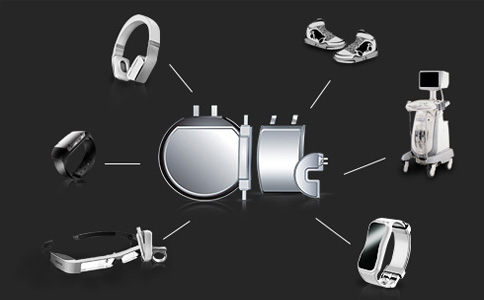
1. Safety performance
Batteries with unqualified safety performance indicators are unacceptable. The most significant impacts are explosions and leaks. The occurrence of explosions and leaks is mainly related to the internal pressure, structure, and process design of the battery (such as safety valve failure, lack of protective circuits for lithium-ion batteries, etc.), as well as incorrect operations that are strictly prohibited (such as putting the battery into fire).
2. Capacity
The total amount of electricity that a battery can release under certain discharge conditions. According to IEC standards and national standards, the rated capacity of nickel cadmium and nickel hydrogen batteries is the amount of electricity released when charged at 0.1C for 16 hours and discharged at 0.2C to 1.0V under 20 ± 50C conditions, expressed in C; The rated capacity of a lithium-ion battery is the amount of electricity released when it is charged for 3 hours at room temperature, constant current (1C), and constant voltage (4.2V), and then discharged at 0.2C to 2.75V. The unit of battery capacity is mAh and Ah (1Ah=1000mAh).
Taking the AA2300mAh nickel hydrogen rechargeable battery as an example, it indicates that the battery is charged at 230mA (0.1C) for 16 hours and then charged at 460mA (0.2C)
When discharged to 1.0V, the total discharge time is 5 hours, and the amount of electricity released is 2300mAh. Correspondingly, if discharged with a current of 230mA, the discharge time is approximately 10 hours.
3. Internal resistance
The internal resistance of a battery refers to the resistance experienced by current flowing through the interior of the battery. The internal resistance of rechargeable batteries is very small, and specialized instruments are needed to measure accurate results. The commonly known internal resistance of a battery is the internal resistance in the charging state, even when the battery is fully charged (corresponding to the internal resistance in the discharging state, which refers to the internal resistance after the battery is fully discharged. Generally speaking, the internal resistance in the discharging state is larger than that in the charging state and is less stable). The larger the internal resistance of a battery, the more energy it consumes and the lower its efficiency. Batteries with high internal resistance generate significant heat during charging, causing the temperature of the battery to rise sharply. The impact on batteries and chargers is significant. As the number of battery uses increases, the internal resistance of the battery will increase to varying degrees due to the consumption of electrolyte and the decrease in chemical activity inside the battery. The worse the quality of the battery, the faster it rises.
4. Cycle life
Cycle life refers to the number of times a battery can undergo repeated charging and discharging. The battery life and capacity are inversely related, and the cycle life of nickel hydrogen batteries can generally reach more than 500 times. The lifespan of high-capacity batteries is relatively short, but can still reach over 200 cycles. The cycle life is closely related to the charging and discharging conditions. Generally, the larger the charging current (faster the charging speed), the shorter the cycle life.
5. Charge retention capability
Charge retention capability, commonly known as self discharge, refers to the ability of a battery to maintain the amount of stored electricity under certain environmental conditions in an open circuit state. Self discharge is mainly determined by various factors such as battery materials, manufacturing processes, and storage conditions. Usually, the higher the temperature, the greater the self discharge rate. A certain degree of self discharge of rechargeable batteries is a normal phenomenon. Taking nickel hydrogen batteries as an example, the IEC standard stipulates that after the battery is fully charged, it should be left in an open circuit for 28 days at a temperature of 20 ± 5 ° C and a humidity of 65 ± 20%. The discharge time at 0.2C should not be less than 3 hours (i.e., the remaining charge should be greater than 60%). The self discharge of lithium-ion batteries and dry batteries is much smaller.












